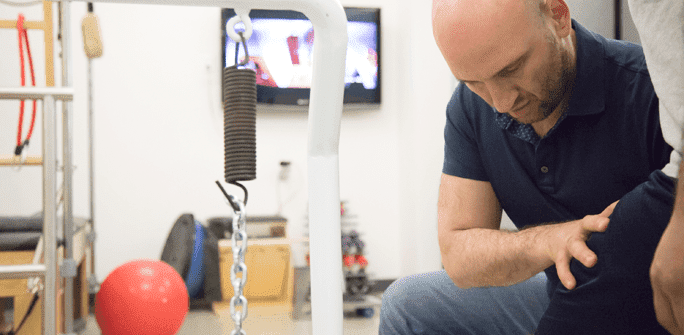November 1, 2016

Many people associate physical therapy with treatment methods to recover from injury or surgery. However, physical therapy is defined as a variety of treatments including massage, heat therapy, and exercise to recover from injury, surgery, and disease.
Physical therapy takes into account the cause of the injury, disease or condition and the symptoms that result from the ailment. The assessment of the condition determines what kind of treatment the physical therapist administers.
One of the purposes of physical therapy is to reduce pain and soft tissues in the muscles, tendons, and ligament. Just as importantly, physical therapy improves flexibility, functions, and range of motion. Physical therapy is also meant to prevent further problems with pain and lack of mobility.
Exercise is almost always a part of physical therapy. The exercise regimen includes specially designed exercises for your condition, but it also, when appropriate, encourages the patient to incorporate movement into their daily routines. Activities that may only take a few minutes such as taking the stairs, stretching, or going for a short walk on a lunch break.
Hands on or manual therapy is the other major component of physical therapy. Manual therapy includes massage and other pain relief techniques to improve mobility and increase circulation.
Many disorders and diseases may benefit from physical therapy. These disorders include spinal stenosis and other chronic back conditions, arthritis, cancer, stroke, fibromyalgia and other autoimmune conditions. Childhood diseases and conditions are also very receptive to physical therapy. Below are a few examples of conditions that respond favorably to physical therapy.
• Multiple Sclerosis – Multiple Sclerosis or MS is a disease afflicting over 25 million people worldwide, the vast majority of them young adults. MS is caused by the loss of myelin, the natural covering that protects the cells of the central nervous system. The loss of the nerve covering causes a communication problem in the cells which impacts walking and other movements. Though MS is not necessarily fatal it the loss of mobility can lead to falls and other injuries and also result in a loss of oxygen. Physical therapy addresses the mobility issues by incorporating treadmills, stationary bikes to improve mobility and leg strength. Aquatic exercising is also very helpful. Water is very therapeutic and helps with body temperature.
• Muscular Dystrophy – Muscular dystrophy is a term which relates to a group of genetic disorders involving muscle weakness. As the muscles weaken function are also diminished such as walking. Muscular Dystrophy also contributes to a curvature of the spine and respiratory and cardio problems. Children respond best to physical therapy treatments which involve exercises for improving motor skills and breathing.
• Parkinson’s Disease – Parkinson’s disease is the second most common degenerative disease. Alzheimer’s disease is the most common degenerative disease. In Parkinson’s disease the loss of brain cells which creates an absence of dopamine. This loss of dopamine is responsible for the problems with balance and coordination, Physical therapy, both exercises and manual techniques address the issues of balance and coordination.
Many individuals have enjoyed terrific results when incorporating physical therapy into their lives both for surgery recovery and chronic illness. It is important to be consistent with your treatment in the way of office sessions and to continue the recommended exercises and treatment at home to be successful If you have a chronic illness, speak to your doctor about getting help from a physical therapist.
Dr. Lev Kalika is a world-recognized expert in musculoskeletal medicine. with 20+ years of clinical experience in diagnostic musculoskeletal ultrasonography, rehabilitative sports medicine and conservative orthopedics. In addition to operating his clinical practice in Manhattan, he regularly publishes peer-reviewed research on ultrasound-guided therapies and procedures. He serves as a peer reviewer for Springer Nature.
Dr. Kalika is an esteemed member of multiple professional organizations, including: